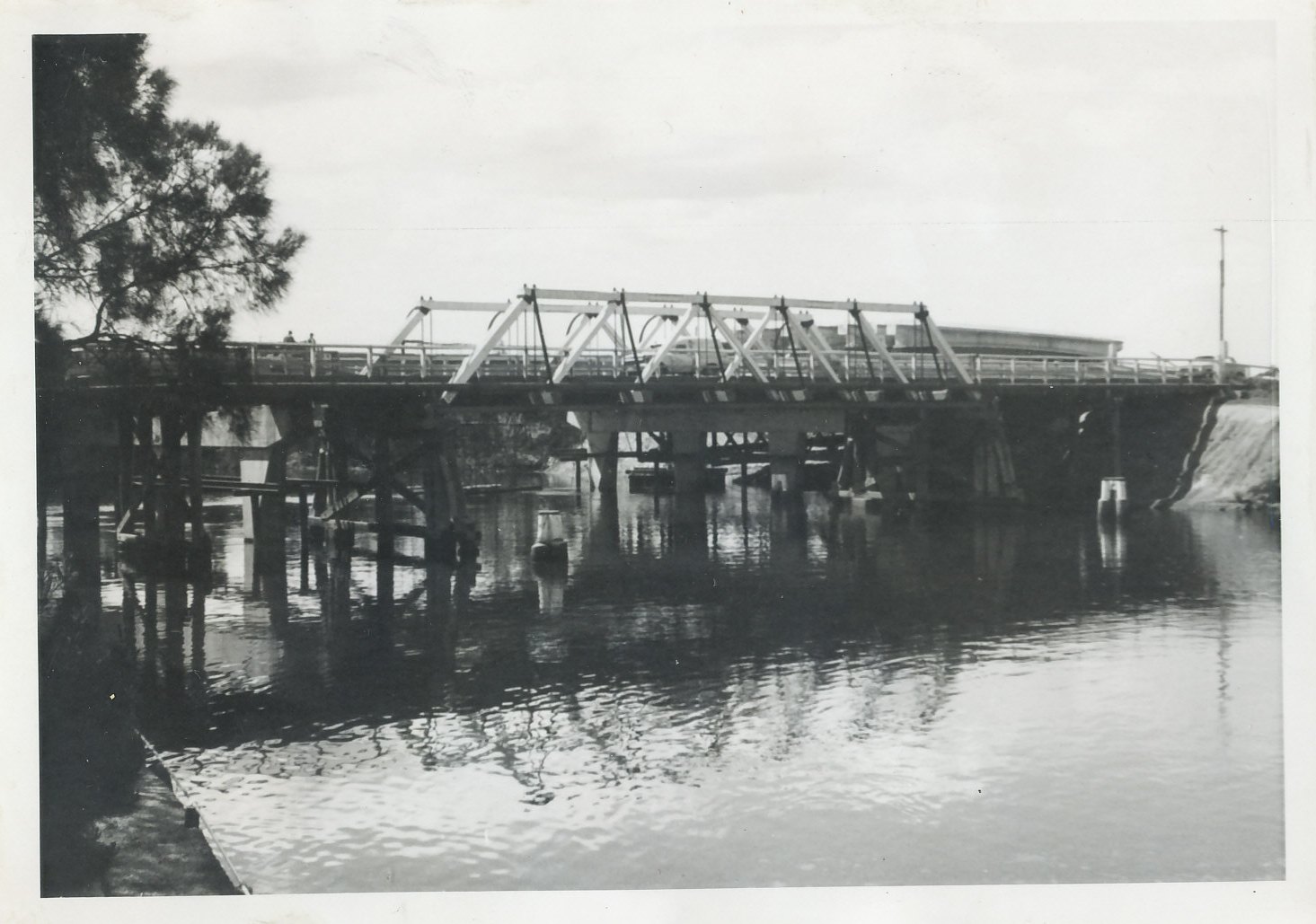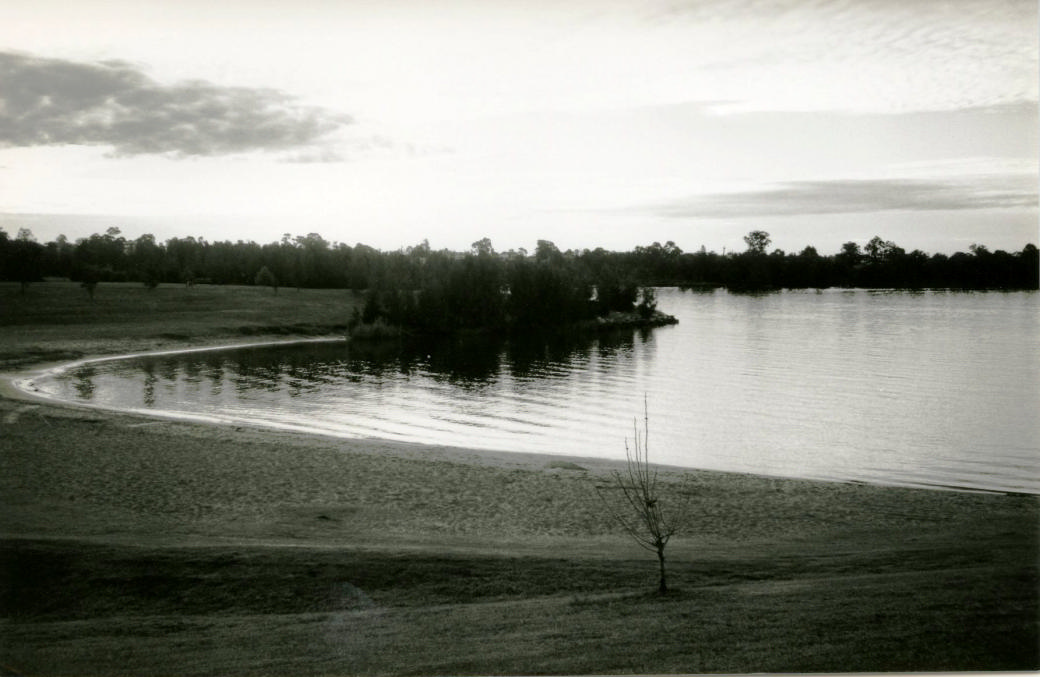Chipping Norton was gazetted as a suburb of the Parish of Holsworthy on 7 April 1972.
Colonial Land Grants
There were several land grants of varying sizes made in the Moorebank and Chipping Norton areas in the early 1800s, but not much is known about Chipping Norton in the middle of the nineteenth century. The land changed hands quite often, possibly due to the Tucoreah-Georges River flooding. Chipping Norton is located in the deep sweep of the Georges Rives as it changes course from north to east.

Old Milperra Bridge crossing the Georges River, Chipping Norton, 1965
Horse Breeding
In the 1880s, William Alexander Long, a politician and racehorse breeder, purchased land in the area and built a large homestead, stables and a private racecourse. He named this property Chipping Norton after an English town of the same name in Oxfordshire. Chipping Norton Homestead is a late Victorian Italianate style villa built in the late 1880s that still stands in Charlton Avenue.
Long was an enthusiastic horse breeder who bred and trained Grand Flaneur at Warwick Farm, winner of the 1880 Melbourne Cup. Grand Flaneur Beach at Chipping Norton Lakes is named after the horse. The horse died in 1900 and was buried at Chipping Norton. Long sold Warwick Farm (then called Warwick Park) to William Forrester in 1882 and returned to England in 1901, staying for several years. He died at Lewisham in 1915.
Sand Mining
There was a sand mine operated by Liverpool City Council in the area of Chipping Norton Lakes.

Grand Flaneur Beach at Chipping Norton Lakes, 6 July 1995
Soldier Settlement Scheme
After William Long’s death, the Commonwealth Repatriation Department purchased land in Chipping Norton for a soldier settlement scheme in 1919. Chipping Norton was sub-divided into small farm blocks for soldiers who had participated in World War I.
Chipping Norton Public School
Chipping Norton Public School was established in 1920 at the request of residents. It opened on 24 May 1920 with 25 children enrolled. The school was originally held in a converted stable on the Chipping Norton property, but in 1922 it moved to its current location.
Burke, Colleen et. al.. The heart of a place : stories from the Moorebank Women's Oral History Project : covering the suburbs of Moorebank, Chipping Norton, Hammondville and Holsworthy in the Liverpool City Council area (Liverpool: Liverpool City Council), 1992. Catalogue Access: https://liverpool.spydus.com/cgi-bin/spydus.exe/ENQ/WPAC/BIBENQ?SETLVL=&BRN=139704
A Brief History of ‘The Homestead’ Chipping Norton (pamphlet, from Liverpool Library Heritage external drive)
GEOGRAPHICAL NAMES ACT, 1966 (1972, April 7). Government Gazette of the State of New South Wales (Sydney, NSW : 1901 - 2001), p. 1199. Retrieved May 25, 2021, from http://nla.gov.au/nla.news-article220139777
Frank Oliveri film clips ,TAPE 29: Chipping Norton floods 1986 [reference number :
LRM002012], Heritage Collections, Liverpool City Library. https://liverpool.spydus.com/cgi-bin/spydus.exe/ENQ/WPAC/ARCENQ?SETLVL=&RNI=305459
See something missing?
You know your suburb better than anyone. If you think an important part of your suburb’s history is missing, whether recent or distant, reach out to the Local Studies Team through our online Local and Family History enquiry form. We are always looking for new ways to bring the vibrant history of Liverpool to life!
